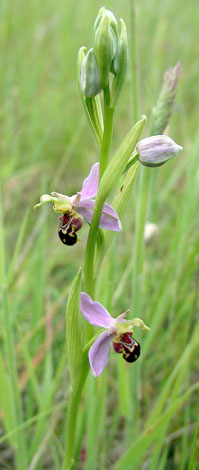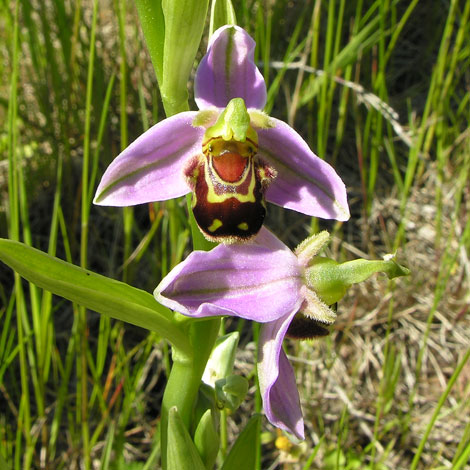Ophrys apifera Bee Orchid C DD N


I've always had a soft spot for this orchid because it took me such a long time to see my first specimen. I had always assumed that this was one of the many orchids that grew mostly in the south of England until in 1989 I found one on Frodsham marshes while looking for salt marsh plants. I now know of four possible sites within walking distance of home so it isn't a rare plant but still looks much more like a lay person's impression of an orchid than the universal purple of the marsh orchid family.
Bee orchids have an interesting way of pollination. The bee is supposed to be attracted to the flower and attempts to mate with it. When it lands on the labellum, a sack of pollen called the pollinium is dumped on its head and sticks to it. It goes with its sack of pollen to cross fertilise another bee orchid.
Elaborate? Yes, particularly it was found that Bee Orchids in the UK are self pollinated- which was a matter of great puzzlement to Darwin who studied these plants extensively.
Bee Orchids, once found more often on the southern counties of England are creeping northwards and more are being recorded, presumably because of climate change. There are a few outposts in Ireland, many in Wales and most recently one has been recorded from in southern Scotland.
Taxonomy: All authorities agree that Ophrys apifera Huds. is a correct name for this species.
Roadside, Kingsley, Cheshire LHS: 5th June 2004 RHS:30th May 2005
Amended on 15th October, January 30th 2005, May 30th 2005, January 10th 2010, updated 20th January 2011




